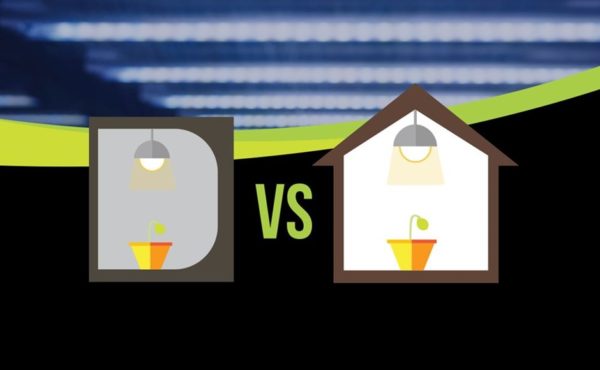How to Decide Between a Grow Tent and a Grow Room

By Kent Gruetzmacher | April 10, 2017

When modern indoor gardeners start a new cultivation operation, they are faced with several set-up and equipment choices. The cornerstone of this planning and purchasing process lies in the decision concerning the garden’s infrastructure: the foundational choice between purchasing a pre-built grow tent and retrofitting a space into a growroom.
Here are a few points of wisdom to follow when making a level-headed decision between a tent and a custom-built growroom. Of course, remember that while media sources like this, as well as friends’ opinions, can be extremely helpful in making this choice, it is recommended that your final judgement be mostly based on personal requirements and the allocated cultivation space.
Choosing the Right Grow System for Your Unique Environments
The first consideration to consider when making the decision to either use a grow tent or a retrofitted room is the fact that every room in a home or building is unique. Different locales within a home experience weather and temperature fluctuations differently, due largely to directional positioning and the level of the building.
To elaborate, a garage has far less insulation and environmental protections than a bedroom does. Even more, a garage with a north-facing door will receive far less sunlight and stay far cooler than a garage with a door facing south.
If one is living in a northern state and is planning on setting up an indoor operation during the wintertime, cold temperatures are a huge concern. In this instance, a grow tent likely will be a bad choice because they don’t offer the insulation that is available with a custom-built room.
Choosing the Right Grow System: Consider the Impact on Your Home
Another exceptionally important variable in a horticulturalist’s judgements concerning tents and retrofitted rooms is whether the home is rented or owned. First and foremost, indoor growers should never attempt to set up a cultivation operation in a rented home without the given consent of their landlord. If you do get a green light, grow tents are a far less intrusive option for respectively growing a small crop in a rented space.
As tents have sturdy interior frames that support a good amount of equipment, they allow growers to set up a grow area without drilling and cutting holes into walls and ceilings. Also, the bottom of a tent is both lipped and waterproof, which should keep excess water from destroying the floors beneath. It is safe to assume that grow tents have far less of an impact on the interior of a home than retrofitting a room does.
Think About the Size and Function of Your Indoor Garden
Aside from the environmental and tenure constraints on a cultivation space, the size and function of the area are the next most important elements in deciding between a tent and a room build-up. This is directly related to one’s personal desires for their indoor operation. For example, it’s unlikely that a gardener can successfully set up a 12,000W flower room in a grow tent.
This set-up would require a 12×16-foot room just for the garden canopy, not to mention space for equipment and working. When indoor operations reach this level of size and complexity, individuals using tents often find themselves spending vast amounts of time simply figuring out how to situate all the necessary equipment instead of growing—it’s unpractical and directly contradicts the beautiful simplicity of grow tents.
Indoor cultivators must also decide whether the area in question will be used for vegetative growth or for flowering. In most indoor growing scenarios, grow tents provide an excellent environment and infrastructure for vegetative growth.
Tents work great for early plant development stages because these periods don’t generally require as much wattage as flowering phases (low temperature fluorescent T5 and LED lights do the job for vegetative growth). Furthermore, flower rooms require more equipment to control environmental factors like smell, humidity, CO2, and temperature.
This extra equipment is very difficult to situate within a grow tent. It is possible to use a tent for flowering phases, but it will likely only be successful and practical on a small, personal scale.
Materials
One more critical element to be conscious of is the types and amounts of materials needed to build your set-up. Grow tents… (For the complete article click here)
Curated by The Grow Tent Guys